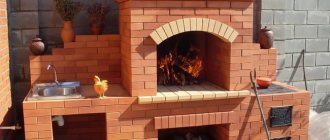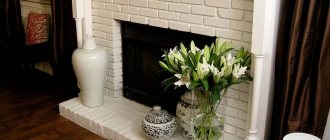Requirements for creating a bench
In order to make a correct, strong, durable bench, it is necessary to take into account the following features of this work and follow certain principles:
- each bench should have comfort and convenience;
- its design should be so thoughtful and logical that it does not require unnecessary materials and tools for work;
- the size of the bench must fully satisfy those resting on it;
- to create a bench, you need to use materials available for work that can be easily found and brought;
- the selected material for a new bench must be of high quality, moisture resistant, and have high protection against temperature changes;
- Before making a bench, you should first familiarize yourself in detail with the information useful for this, and, if necessary, study the detailed drawings of the bench.
Types of upholstery material for benches
The following materials can be used as upholstery material.
- Leather. It is in demand, but at hot temperatures it can stick to the body and create an unpleasant effect. This minus should be taken into account when purchasing.
Genuine leather is a wear-resistant, harmless and stylish material.
Read also: The work is easy and the salary is great
- Leatherette. It has a skin-like effect, but is in demand. These two types are the most popular.
Outwardly, it is very similar to leather, looks expensive, beautiful, and is much cheaper in price.
- Eco-leather. It has high wear resistance and frost resistance.
Eco-friendly upholstery made from pressed leather and synthetic raw materials.
- Impregnated fabrics.
Impregnated sofas can be wet cleaned.
Read also: bright red paint, letters, crossword puzzle
When drops of food and drinks get in, everything remains on the surface of the fabric. Despite the fact that the fabric can be washed, this drawback should be taken into account when choosing.
Options with anti-vandal coating are very popular.
It is worth considering that designers provide a varied selection of patterns and colors.
The new accessory should perfectly match the decor of your kitchen.
How to make a bench with your own hands from wood
The design of this bench is quite simple, so even an inexperienced craftsman, for whom this will be the first time, can make it. Below is a step-by-step description of how to make a wooden bench:
- First of all, you need to draw a diagram of the bench. This will help make the manufacturing process easier and faster, without unnecessary deviations and corrections;
- The side parts of the wooden bench are assembled. To do this, first drill the necessary holes in which all fasteners and additional elements will be connected;
- The sidewalls are secured with nuts and bolts. A sealed washer is placed under the nut, which should not be tightened too tightly right away. After all, during the work you will need to adjust its density;
- connecting the side parts of the future bench. They must be fixed and connected with large-diameter self-tapping screws. Also for this purpose, fasteners that have a turnkey head are used;
- fixing all details. To connect the sides and back of the bench, you should not attach the parts closely. There should be a hole of about 5 mm between them. Next, all elements are tightened and fastened;
- leveling the joints of self-tapping screws in wood using putty. At this stage, sandpaper is also used to clean out all the flaws and irregularities of the structure being created. Then this tree should be impregnated with an antiseptic and covered with paint;
After complete drying, the wooden bench is ready for use.
Additional equipment
For ease of use, the bench can be equipped with various useful little things. Here imagination and consideration of personal needs will come to the rescue:
- to make it convenient to use the product for processing beds, for example, when you need to kneel down, weed or loosen plantings and trim plants, a variety of cushion seats are suitable;
- a foam rubber mat wrapped in oilcloth can be attached to both sides of the seat to make sitting and kneeling softer; to make it easier to wash soiled material, it is better to make it removable, for example, in the form of a pad with ties;
- on the sides you can attach fabric pockets with valves for small equipment or water bottles;
- For carrying, you can build a shoulder strap that allows you to free your hands.
To soften the seat mat, pieces of tourist foam, synthetic padding, polystyrene, holofiber, struttofiber, and other synthetic padding materials can be used.
As you can see, the simplicity of the design will make it easy to create a “shifter” yourself. Such a homemade weeding chair will remain a useful and necessary household device for a long time, and its use in the garden will help save strength and health.
How to make a bench with a back
To create a bench with a backrest with your own hands, the craftsman will need the following tools:
- mitral and circular saw;
- pencil;
- tape measure;
- drill with an optimal set of drills.
The following is a list of necessary materials for the future bench (all boards should be 2.5 m long):
- boards measuring 2x3 (7 pieces);
- 2x4 boards (1 piece);
- boards measuring 2x6 (1 piece);
- bars measuring 2x2 (2 pieces);
- glue for woodworking;
- sanding material;
- a set of screws of 5 cm and 8 cm.
To begin assembling a bench with a backrest, start from the back legs. But first you need to make sure that all the necessary boards are labeled and numbered. This will prevent confusion and corrections during assembly. Next, the front legs are added to the rear legs along with a seat, support for the armrests with lower stretchers. All fastening elements must be level and fix each other.
Before starting assembly, it is advisable to lay out all the boards in the desired order and shape to make sure that everything matches and fits. Only then are the fasteners connected to the structural elements.
One of the last stages of creating a bench with a back will be fixing the lower slats to the base of the frame. The seat and the backrest are attached to them from above. To hide the fastening materials (screws), they are drilled from the bottom and back of the planks.
Which one to do
It is possible to make a kitchen corner in different types of designs. The main requirements for a kitchen corner are compactness, convenience (ergonomics) and hygiene in the kitchen. We still need to achieve maximum savings in money, materials and labor by working as a public tool. Based on this, we will choose which one can be made simpler and better.
The main types of kitchen corners are shown in the photo. Pos. 1 – bay window corner, round or faceted. Each rider is allocated an optimal seat width of approx. at knee level. 400-450 mm. The bay window corner is extremely convenient and cozy, but, alas, it is complicated, expensive and requires an extensive kitchen.
Types of kitchen corners
A semi-bay window corner will fit into the kitchen of a modern apartment above the middle class: the side sections are straight, and the width of the corner at knee level is 200-300 mm, pos. 2. For a person of average build, sitting in the corner of a half-bay window is almost as comfortable as in a bay window. In a kitchen of normal dimensions, corners with a beveled corner are most often installed instead of half-bay windows; in them, the rider’s knees have 150-200 mm, pos. 3. You can’t move much anymore, but sitting quietly, no thoughts arise about where to put your knees.
Kitchenette with sleeping area
Lovers of small-sized kitchens most often make straight corners, pos. 4, with backrest wedge in the corner, pos. 5, and with a beveled back, pos. 5. Their convenience, technological complexity and cost are increasing in this series, but straight kitchen corners have a common positive property: if instead of a pair of stools on the long side of the kitchen table, the height of the bench is the same as the seats of the corner, then by moving the table and moving the bench, you can get a bed with a width of 600-850 mm. Very expensive and equipped with complex mechanisms, branded kitchen corners with a sleeping place are no more convenient, see fig. left. A corner with a beveled corner also has the property of transforming into a sleeping place without additional devices, if the corners of the seat of the complete bench are appropriate. beveled way.
Uncomfortable kitchen cornerNote: in fig. on the right is a perverse product of modern marketing - an expensive straight kitchen corner. In fact, the straight angle is the most uncomfortable of all. Much more inconvenient than its closest relative - a corner with a wedge in the back. A straight kitchen corner is only good for placing an unwanted guest in the corner. But he won’t be able to leave in English; he will have to push the owners away.
Corners with a beveled corner and a back are often complemented by a table and/or bar in the corner, pos. 7-9. The first two are not an option: getting something out from behind your back is inconvenient, but pushing it or accidentally knocking it over is easy. If the owners are firmly subject to prejudices and do not want to put anyone in a corner, then it is better to equip a mini-sideboard with a chest and a bar in the corner, as in pos. 9.
At pos. 6, 7 and 8 show corners with the so-called. hanging angle, i.e. without a separate support. Kitchen corners with hanging corners, made of laminated chipboard, are no less strong and durable than those with supporting corners, but they are cheaper and more technologically advanced to produce. However, they cannot be modular (see below), because initially performed only by the right or left. For the consumer, their cheapness is apparent, because... The hanging corner angle cannot be transported assembled and requires assembly on site.
Modular corners
Kitchen corners made from pieces of furniture that are not connected to each other (modular, see fig.) are good to produce and sell: there is no need to make right and left versions. They are also appreciated by those who often rearrange furniture; modular kitchen corners look good in studio apartments of laconic styles, such as loft, high-tech, minimalism. But the functionality and ergonomics of modular kitchen corners, simply put, are non-existent - you can’t put anything in them, and it’s uncomfortable to sit in the corner.
Modular kitchen corners
Note: traditional kitchen corners are also made modular, consisting of 3 separate items - a pair of sofas and a corner. They are placed right or left, turning the corner by 90 degrees, and one of the sofas by 180. However, such corners are more expensive, because Extra material is required for the corner and its design becomes more complicated. It is very difficult to make a modular kitchen corner at home, because... To the required accuracy of pairing of parts within 1 item (see below), the accuracy of pairing of objects with each other is added.
Practical tips for creating a garden bench
Making a garden bench with your own hands is also not difficult, because it has a fairly simple design. This bench is placed on four legs, which are all connected together. This ensures strength and secures the back well.
To create a classic garden bench, first of all, make a frame. To do this you need to prepare the following type of boards:
Note!
How to make a shoe rack with your own hands - simple and complex options. Step-by-step instructions with photos and descriptions
How to make a fence with your own hands: detailed instructions, diagrams, drawings. Description of the process from A to Z!
How to make a barbecue with your own hands from metal - the best manufacturing options with drawings and step-by-step instructions (100 photo ideas)
- 1.5 m boards (5 pieces);
- boards 0.36 m each (2 pieces);
- boards 0.52 m each (2 pieces). They are cut lengthwise into 4 bars, which are then used to fasten the seat and legs;
- boards 0.72 m each (2 pieces). In the future they will hold the back and legs together.
Having prepared the boards of the required size, they must be sanded and all defects and burrs on them must be eliminated.
Next comes the assembly of the frame itself. To begin, connect the legs together using self-tapping screws. Then a seat and back are attached to them. And so that the fasteners are not visible, they are placed on the reverse side. At the last stage of creating a garden bench, a lower bar is installed to secure the legs with the main structure.
When the entire bench is assembled, it is painted to protect it from temperature fluctuations and possible moisture. For painting, yacht varnish or special impregnation is recommended. But it is worth remembering that after using the varnish, such a bench will always be cold.
Location
The first problem that needs to be solved is choosing a location for the bench. It affects the material of the structure. For example, for an old garden with large branchy trees, wood products are suitable; for a small area not heavily planted with trees and shrubs, small openwork structures are recommended.
If you look online for examples of photos of benches in the country, you will see that they are often an integral part of gazebos, verandas and summer areas. If you are planning to do something similar, then make sure that all the details are made in the general style.
Choose a place for the bench so that it offers a pleasant view. It’s unlikely that you’ll want to admire your neighbors’ fence or the walls of your barn.
It is advisable to choose places in front of lakes or rivers, flower beds, etc. The main thing is that the surrounding objects attract and please the eye, help you relax and put you in a positive mood.
It is advisable that the bench be located in the shade. It is placed under the crowns of large trees or under canopies. Remember that it acts as a place for rest and relaxation.
You can put benches next to the beds. There are several advantages here. Firstly, the owners of the site will be able to monitor the growth of the crop. Secondly, the bench is suitable for taking a few minutes’ rest from physical labor (digging, watering, harvesting).
Don't forget about decorative decorations. Have you made a simple bench with your own hands? Place flowering shrubs around it. Flower beds are also suitable for decoration. They are placed on a raised platform or a special platform is created from bricks, tiles or logs.
Assembling a garden bench from a pipe
A garden bench made of a profile pipe is considered more difficult to manufacture than, for example, a bench made of wood. But thanks to its practicality and durability, it still remains popular and one of the favorites among consumers.
To assemble it you will need:
Note!
DIY country washbasin - review of simple and complex designs (97 photos of the best ideas)
How to make a garden (construction) wheelbarrow with your own hands: detailed instructions with description + 85 photos of fresh ideas
How to make a hot smoked smokehouse with your own hands: drawings, dimensions, choice of material, photos of finished options
- rectangular pipe measuring 2.5x5.5 cm and 5 m long;
- soft metal sheet measuring 2.5x20.0 cm;
- soft metal sheet measuring 10x30 cm;
- flat head screws (26 pieces);
- screws 3 cm (4 pieces).
All elements are connected using a welding machine. If it is not there, then parts for the bench will have to be ordered from special workshops.
In addition to the metal frame, this bench also uses wooden slats. You can paint it either with paint or varnish. This will give the bench a more aesthetic and attractive appearance.
Corner
The corner module of the original design is quite complicated (item 1 in the figure), not entirely convenient and not very hygienic: along the gap between the back and the seat, dust and crumbs will fall just where it is difficult to remove them. Since in our case the entire corner is made at the place of constant use, it would be more expedient to build a hanging corner for it, tightly fastened to the sofas. Drawings of its 5 parts - seat, support bar and 3 back segments - are given in Fig. The bevel of the corner seat with sofa seats 400 mm wide is 210 mm, and this is considered a half-window window that fits in a small-sized kitchen. The bevel can be straight, convex or concave. The most convenient thing is a slightly convex bevel, but then it will not be possible to attach a bench to arrange a sleeping place. The backrest has an upward camber, which further improves ergonomics.
Drawings of details of the corner section of the kitchen corner
The dimensions of the back segments must be verified according to the location. reasons. First, small parts are greatly affected by the thickness of the skin. Since the sofas were covered earlier, this value will be known by the time the corner section is manufactured. Secondly, all the dimensional errors accumulated in the sofas will converge into one in the corner.
And yet, the seat and backrest segments need to be trimmed freely, without tension, so that the backrest does not overtighten the fabric when assembling. The lower edges of the segments need to be beveled inward by 2 mm (at an angle of 10 degrees, this is with a margin). The tops of the segments can be figured (options in positions 4 and 5 in Fig.), as long as the contours converge at the connecting points.
Note: rear support posts do not need to be installed if there are no suitable scraps and the rider weighs less than 100 kg. If they are installed, then they are attached in pairs of confirmations through the face into the edge. The heel of the lower support is sealed with a piece of ABS and just stands on the floor.
Corners in a corner
This corner also has 2 secrets. The first is a nook under the seat. From the point of view of a domestic animal, this is a reliable reserve den at a safe distance from the main house. And from the point of view of the owners, it does not cause them unnecessary trouble.
Second. The middle segment of the backrest does not bear operational loads. If you place it on friction pins instead of self-tapping screws, a hiding place will form in the cavity behind it. You will just need to sew an outward-facing tongue-strap made of durable fabric to the upholstery of the lower edge, and sew up the corner section from the rear with fiberboard. When closing the cache, the tongue is tucked inward so that it is not visible. To open the cache, the tongue needs to be pryed and pulled out with a fork or something like that. Remove the segment by pulling the tongue and the top of the back. This cache is unlikely to hide anything from an experienced burglar or a professional search, but it is quite reliable from an amateur thief or overly curious household members.
Tags
Ratings of kitchen appliances.or kitchen table installed kitchen or Kitchen bench small kitchens and corner kitchen bench kitchen bench FASHIONABLE KITCHENS kitchen interior and Kitchen Styles Kitchen colors Kitchen finishing for kitchen Bench on record Bench matched bench for Small bench and wooden benches servedwooden benches accept
interiorproductbuystoredeliverydirectmoscowtowerwhitemodernbedsviewshelvesoversizediscompanycommentprovencecornersonlysitechairssitecornersetsmanufacturersonemore detailsbanquettesgardenalmostordersource











